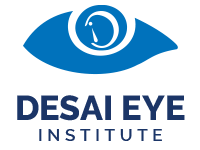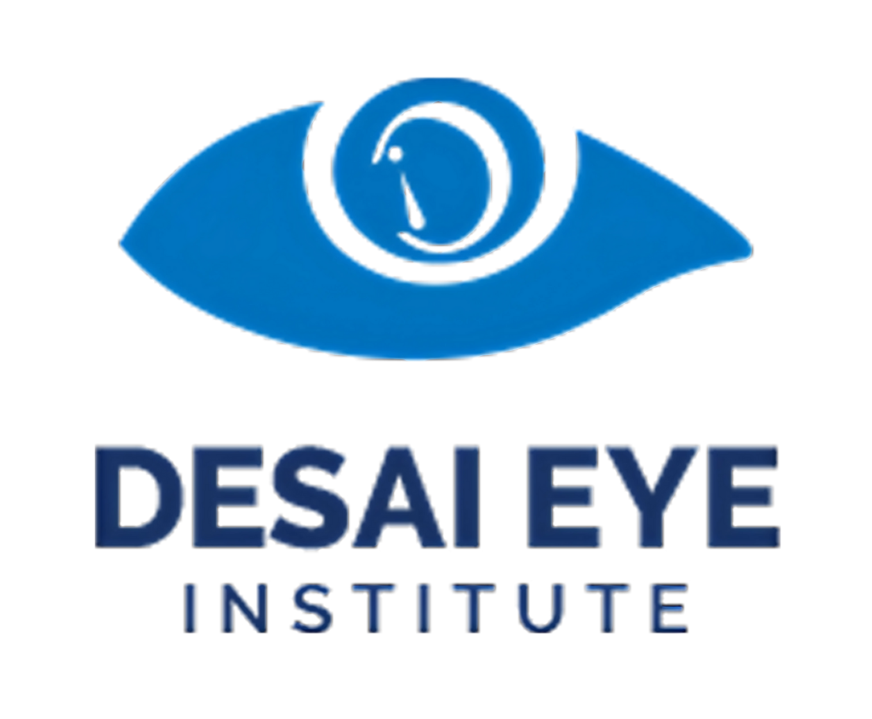Cataract surgery is one of the most commonly performed and most successful operations worldwide. In Gujarat, patients now have a choice: well-established traditional cataract techniques or newer laser-assisted approaches that promise added precision. At Desai Eye Institute and Research Centre — a leader in Advance eye care Vadodara — we help patients understand both options so they can choose what’s best for their vision, lifestyle, and long-term eye health.
What is a cataract and why treat it?
A cataract is a gradual clouding of the eye’s natural lens that occurs due to aging, eye trauma, or certain medical conditions. Typical symptoms include blurred vision, glare, trouble driving at night time, faded colors, and increasingly needing stronger glasses. When surgeons remove a cataract, they restore clarity by replacing an eye’s cloudy lens with an artificial intraocular lens (IOL). The intent of cataract removal is to not only remove the cataract but also restore each patient’s best visual outcome — either excellent distance vision, less reliance on glasses, or improved night-time driving.
Traditional (Phacoemulsification) Cataract Surgery: tried and true
The modern standard for decades has been phacoemulsification. In this technique:
• A small incision (usually 2–3 mm) is made in the cornea.
• An ultrasonic probe breaks the cloudy lens into tiny fragments (phaco), which are suctioned out.
• A foldable IOL is implanted through the same small incision.
Phacoemulsification is fast, safe, and effective. Surgeons appreciate its long track record, and patients usually benefit from quick visual recovery and minimal astigmatism when the incision is small.
Advanced Laser-Assisted Cataract Surgery: what’s different?
Laser-assisted cataract surgery (often referred to as femtosecond laser-assisted cataract surgery, or FLACS) introduces a femtosecond laser into certain steps of the operation:
• The laser creates precise corneal incisions.
• It performs a perfectly centered, circular opening of the lens capsule (the capsulotomy).
• The laser may pre-soften or segment the cataract for gentler removal.
These laser steps are planned using advanced imaging and optical coherence technologies, allowing highly repeatable, micron-level precision that is difficult to achieve manually.
Side-by-side comparison: laser vs traditional
Precision and reproducibility
Laser: Creates consistent, perfectly centered capsulotomies and very accurate incision architecture.
Traditional: Relies on the surgeon’s skill; excellent outcomes are common but there is slightly more variability.
Safety and intraoperative energy
Laser: Pre-fragmentation can reduce the amount of ultrasound energy required to remove the lens — potentially gentler on the cornea.
Traditional: Effective and safe for most cataracts; experienced surgeons minimize ultrasound energy and corneal stress.
Visual outcomes and premium lenses
Laser: The precision of the capsulotomy helps when implanting premium IOLs (multifocal, extended depth-of-focus, toric) because lens positioning and centration are critical to performance.
Traditional: Still highly successful with premium IOLs when surgery is performed by experienced hands.
Recovery and comfort
Both techniques lead to a fast recovery. Some studies have demonstrated marginally quicker corneal recovery after laser-assisted stages, particularly in cases where ultrasound energy is significantly reduced. In the end, patient comfort and visual rehabilitation are good with either approach in the setting of contemporary IOLs.
Cost and accessibility
Laser-assisted surgery typically costs more due to the technology involved. For many patients, the small incremental cost is justified by the increased precision and potential advantages with premium lens implants. For others, traditional phacoemulsification provides excellent results at a lower cost.
Who is a good candidate for laser-assisted cataract surgery?
Laser technology is particularly beneficial for patients who:
• Plan to receive premium or toric IOLs and need precise centration and astigmatism correction.
• Have challenging anatomy (e.g., small pupils, dense cataracts) where laser pre-fragmentation reduces phaco energy.
• Want the potential added predictability of incision architecture and capsulotomy.
However, not every patient requires laser steps — many people achieve excellent vision with standard phacoemulsification. A personalized evaluation at an Advance eye hospital Vadodara will determine the most suitable technique.
Dry eye and cataract surgery: what to watch for
Many patients have coexisting ocular surface issues such as dry eye. Proper evaluation and treatment before surgery are essential because unstable tear film can affect preoperative measurements (biometry) and final visual outcomes. At Desai Eye Institute, we offer Dry Eye treatment in Vadodara and optimize the ocular surface before cataract measurements and surgery. Addressing dry eye first improves accuracy and patient satisfaction.
Why Desai Eye Institute for cataract care?
The Desai Eye Institute and Research Centre, situated in Vadodara, Gujarat, is a leader in Advance eye care Vadodara, dedicated to changing lives through world-class vision care. With years of experience, we have become a respected institution providing comprehensive ophthalmic treatments, integrating the latest medical technology with a caring, individualized approach. Our Institute provides extensive eye care, including cataract surgery, glaucoma management, retinal surgery, and neuro-ophthalmology. In addition, we treat complex corneal diseases and perform delicate oculoplastic surgeries, customizing care for each individual patient.
At the core of our philosophy is a commitment to innovation, precision, and excellence. Equipped with state-of-the-art technology and driven by evidence-based practices, we consistently achieve exceptional outcomes. Our compassionate team of experts is dedicated to providing not just medical care, but a sense of trust and reassurance for every patient.
As a center offering Advanced eye care treatment in Vadodara, we provide both traditional phacoemulsification and laser-assisted cataract options. Our surgeons engage patients through direct conversations that explore all the benefits and risks, as well as recovery expectations and costs, in order to support informed decisions for each person’s lifestyle and vision objectives.
Practical considerations: cost, expectations, and recovery
- Expense: Laser-assisted surgery can be more costly; assess advantages (surgical accuracy, premium IOL performance) in relation to finances.
• Expectations: Both procedures are designed to result in excellent vision; however, achieving “spectacle independence” from glasses depends on the type of IOL, health of ocular surface, and the expectations of the patient.
• Recovery: Most patients experience a prompt visual recovery in a matter of days. Follow-up management is important to manage the healing process and evaluate the potential for treatment of dry eye or refractive refinement.
Making the right choice
Choosing between advanced laser technology and traditional cataract surgery is a personalized decision. Factors include ocular anatomy, presence of dry eye, desire for premium lens options, budget, and surgeon experience. A thorough preoperative assessment at a recognized Advance eye care Vadodara center like Desai Eye Institute will clarify which approach offers the best potential outcome for you.
Conclusion
Cataract surgery is safer and more effective now than ever before. Laser-assisted methods help provide another degree of accuracy and precision in select patients and is ideal for patients who want the best possible visual outcomes. For others, phacoemulsification is still an excellent choice and has been performed for decades. At Desai Eye Institute and Research Centre, we provide access to procedures using advanced technology and deliver clinical expertise through the continuum of care—pre-operative optimization (including Dry Eye treatment in Vadodara) to surgical safety, all the way to understanding the post-operative course of care. If you or a family member have been considering cataract surgery, contact us to determine what the best option is for you to achieve clear, comfortable vision again.
FAQs
Q1. What is cataract surgery?
A1. Cataract surgery replaces the eye’s cloudy lens with a clear artificial intraocular lens (IOL), restoring vision and reducing dependence on glasses.
Q2. What is the difference between traditional and laser-assisted cataract surgery?
A2. Traditional surgery uses ultrasound to break the cataract, while laser-assisted surgery adds femtosecond laser precision for corneal cuts, lens softening, and capsulotomy.
Q3. Is laser-assisted cataract surgery safer than traditional?
A3. Both are safe, but the laser allows greater precision, reduced energy use, and better outcomes with premium lenses.
Q4. Who is a good candidate for laser cataract surgery?
A4. Patients opting for premium or toric IOLs, those with dense cataracts, or anyone wanting the most precise, predictable outcomes.


